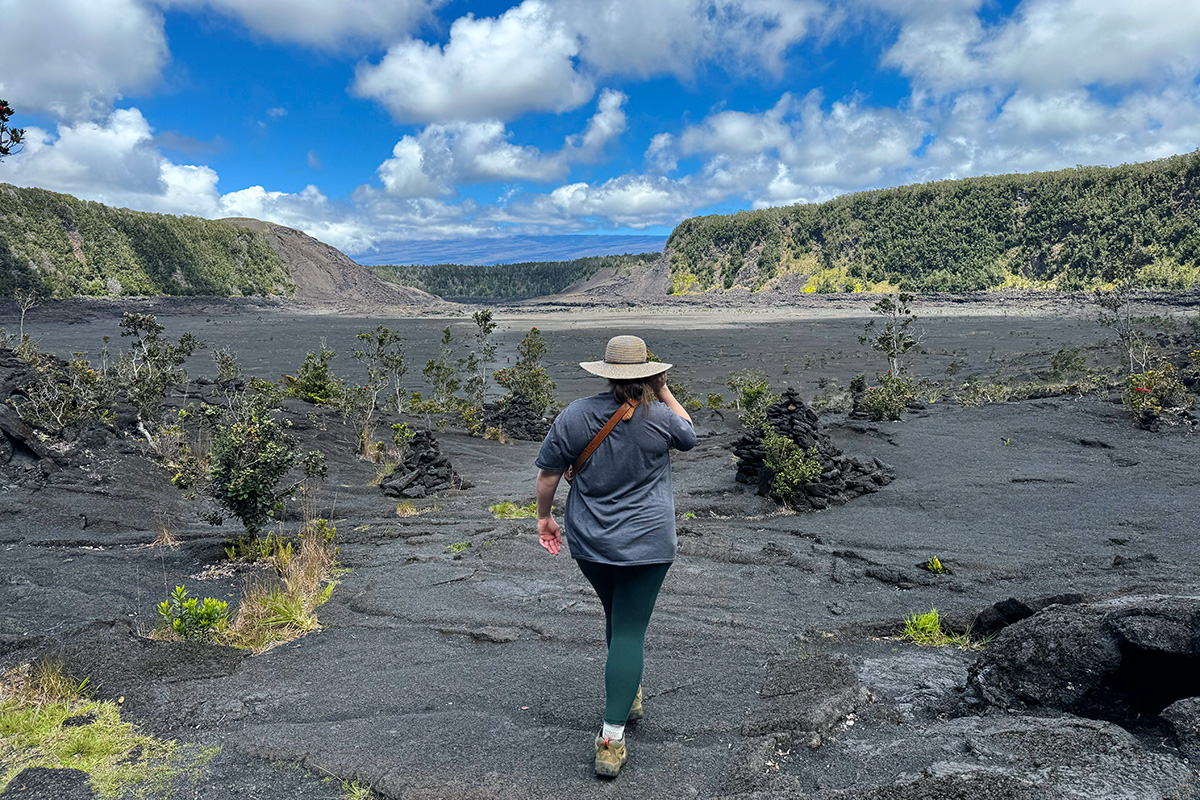
Visiting Hawaii’s Big Island is a bucket list adventure, and there’s no better way to cross off some items than by experiencing all the best things to do in Volcanoes National Park. In fact, it’s one of two national parks in all of Hawaii, so it’s a must-visit.
When you do, you’ll be met with diverse landscape that spans from the coastline all the way to the summit of an active volcano. Time your visit right and you’ll be able to see actual lava flows from a safe distance.
Since Hawai’i Volcanoes National Park is one of the Big Island’s main attractions, you’re going to want to make the most of it. So in this guide I’ll break down all the best things to do in Volcanoes National Park, plus include tips on how to make the most of your trip.
This post has some affiliate links, which means I’ll earn a small commission at no cost to you if you click on them and make a purchase. This is a small way I earn money to support this site. If links aren’t showing up for you, turn off your ad blocking software. Thank you for your support!
8 Things to Do in Volcanoes National Park
Before diving into all the things to do in Volcanoes National Park, let’s dive into some history about the park, the weather, and more so you’re prepared for your visit.
Where is Volcanoes National Park?
Volcanoes National Park is on the Big Island of Hawaii. You’ll need to drive there, so make sure to rent a car. A 4×4 vehicle isn’t needed, but get one if you also want to drive yourself up to Mauna Kea for stargazing. This isn’t part of the national park, but is another bucket list adventure on the island!
Hawai’i Volcanoes National Park is about a 2-hour drive from Kailua-Kona and 45 minutes from Hilo. Therefore, when you’re booking where to stay on the Big Island, I recommend finding somewhere in Hilo so you’re closer to the park entrance.
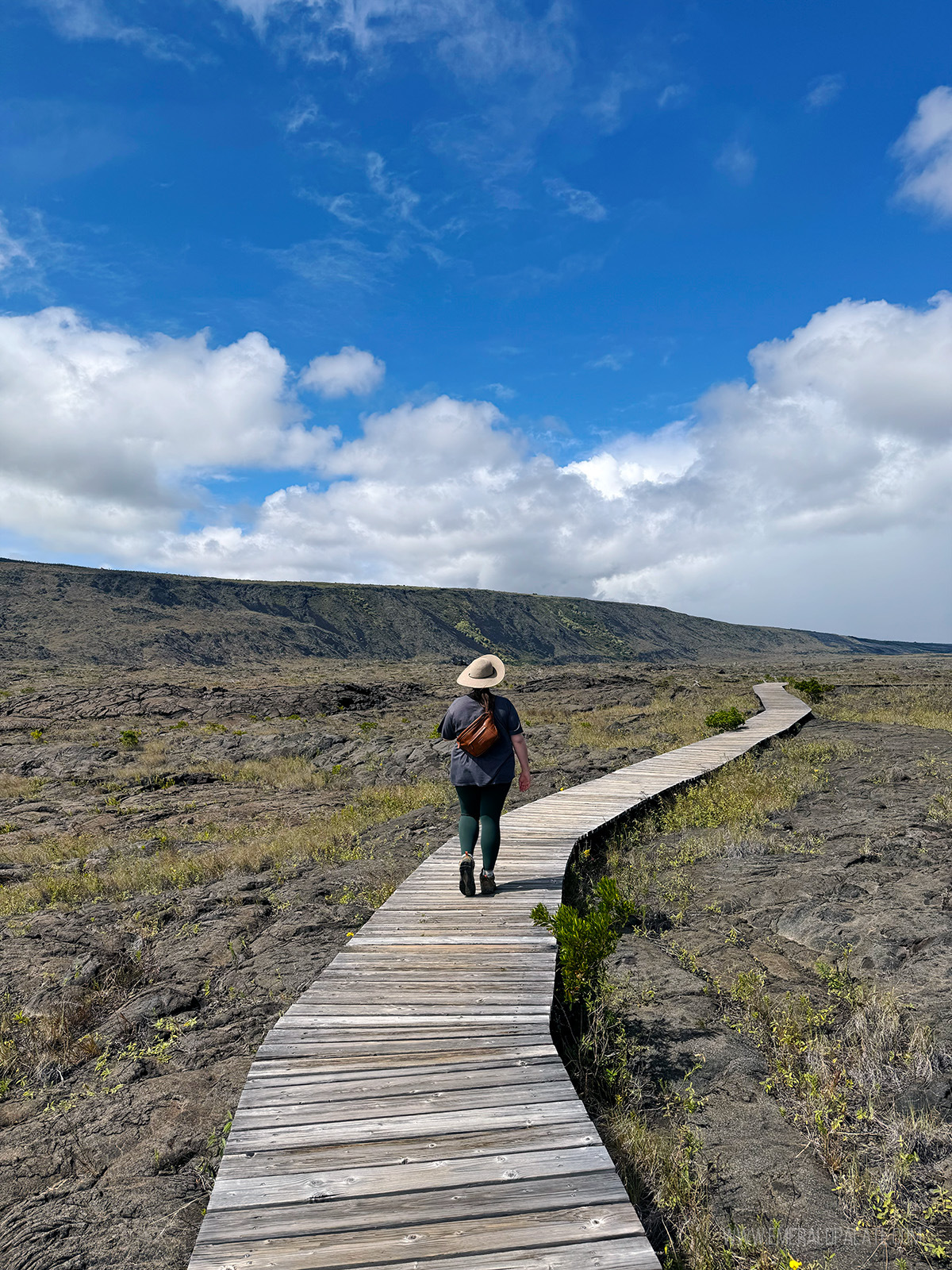
Is it worth going go Volcanoes National Park?
100% yes, it’s worth visiting Volcanoes National Park. More than 1.6 million people visit every year to explore the park’s unique, rocky landscape and hopefully catch a glimpse of some lava.
That’s no pipe dream, either. Volcanoes National Park is home to two active volcanoes: Kīlauea and Mauna Loa. The latter is the world’s largest active volcano, sitting at 13,680 feet above sea level. When active, volcanic eruptions tend to happen in episodes other a long period of time so you are likely to see lava if visiting during this period. Check the live webcams before your visit!
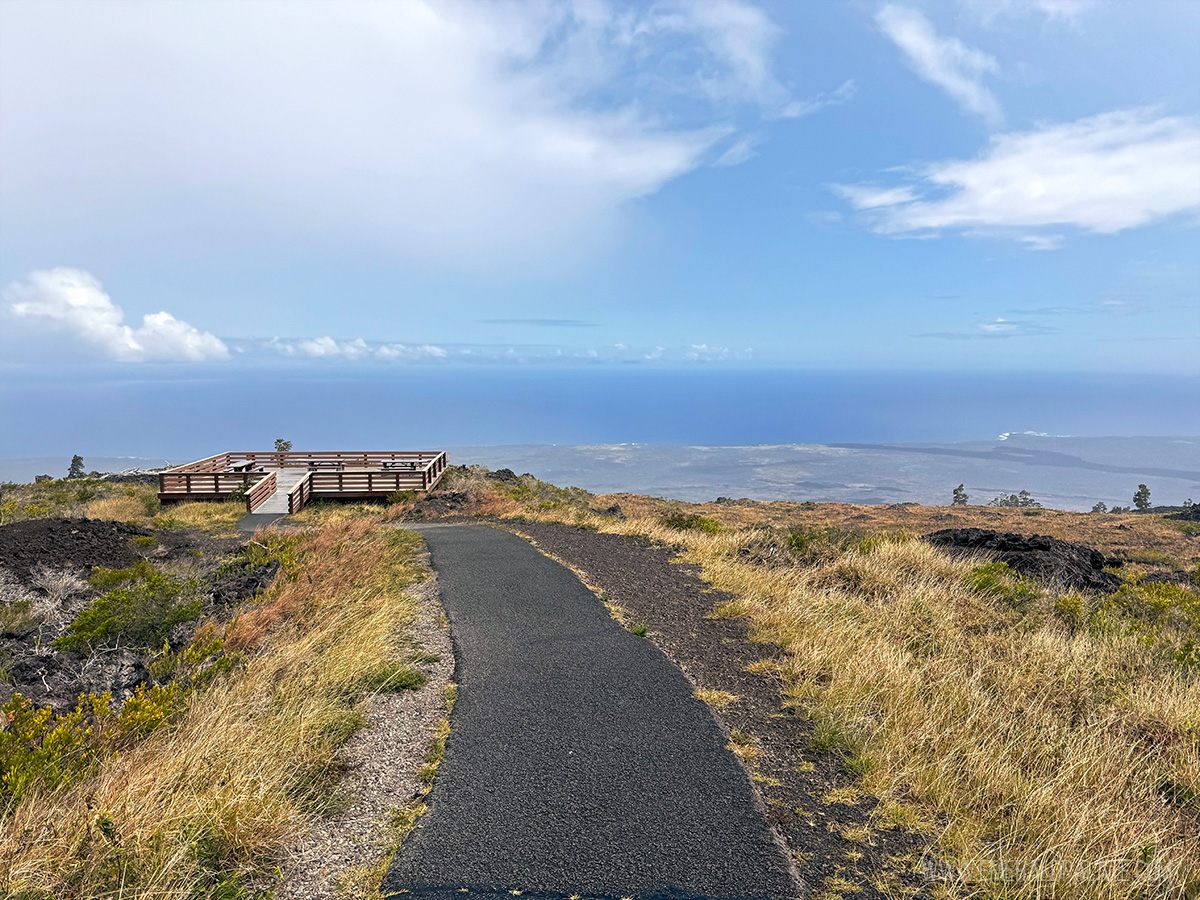
How long do you need at Volcanoes National Park?
While it’d take days to explore every nook and cranny of the park, what makes Hawai’i Volcanoes National Park unique is that you can explore most of the highlights in just one day. And since the park is open 24 hours, you can really maximize your time.
The park has a few different entrance fees depending on how long you’ll stay. A single day visit will run you $30 per standard vehicle.
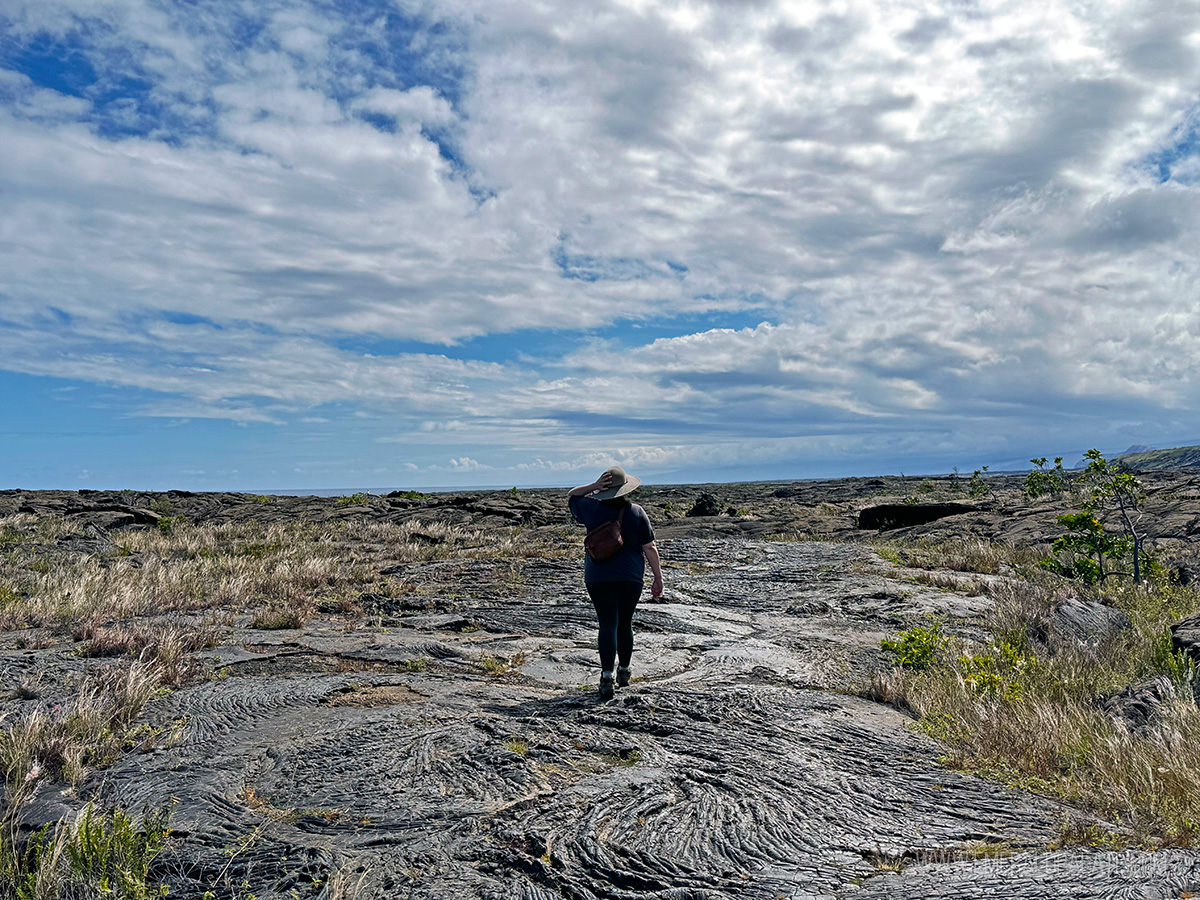
What to do in Hawai’i Volcanoes National Park
Some housekeeping: In addition to checking the live cams for lava, I highly recommend checking the park conditions on the NPS website before you disembark to make sure there are no road closures. The park is open year round, but there are frequent construction projects.
Also, download offline maps because service is spotty. Lastly, wear layers, bring sun protection, and pack food and water. While there’s one restaurant at the lodge in the park and food options in the nearby town of Volcano, you’ll make the most of your day if you have a packed lunch in the park. If you’re coming from Hilo, stop at Keaukaha General Store for the best spam musubi of your life. They make excellent trail snacks!
Alright, let’s get into the fun part: all the best things to do at Volcanoes National Park. Save this to Pinterest for later, as I’ll add more spots when I discover them on future visits.
Hike the Kīlauea Iki Trail
website | directions | best for: breathtaking hike in a dormant crater
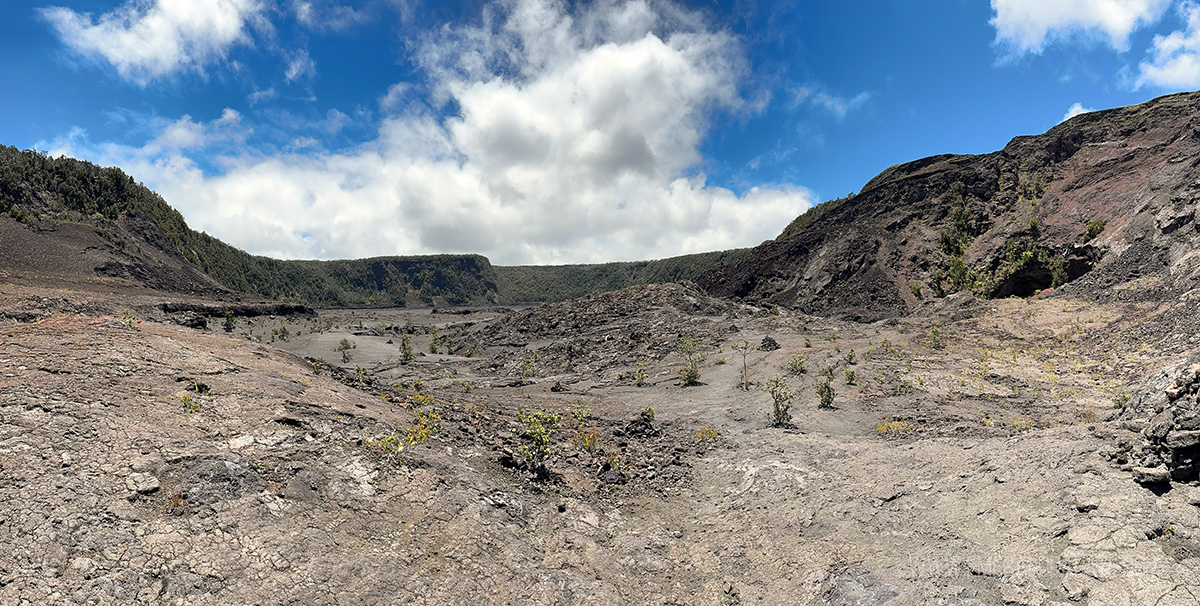
One of the most iconic activities in Volcanoes NP is to visit Kïlauea Iki Crater. You can see it from above at the Kīlauea Iki Overlook, but the best way to experience it is by hiking right to the crater floor on this ~3.2-mile loop hike.
Doing the hike gives you the chance to walk across a once-molten lake of lava formed during an eruption in 1959. The trailhead leads you through a lush rainforest down to the still-steaming crater floor. While the hike starts shaded, you’ll be in the punishing sun for a deceptively long time once in the crater, so be prepared!
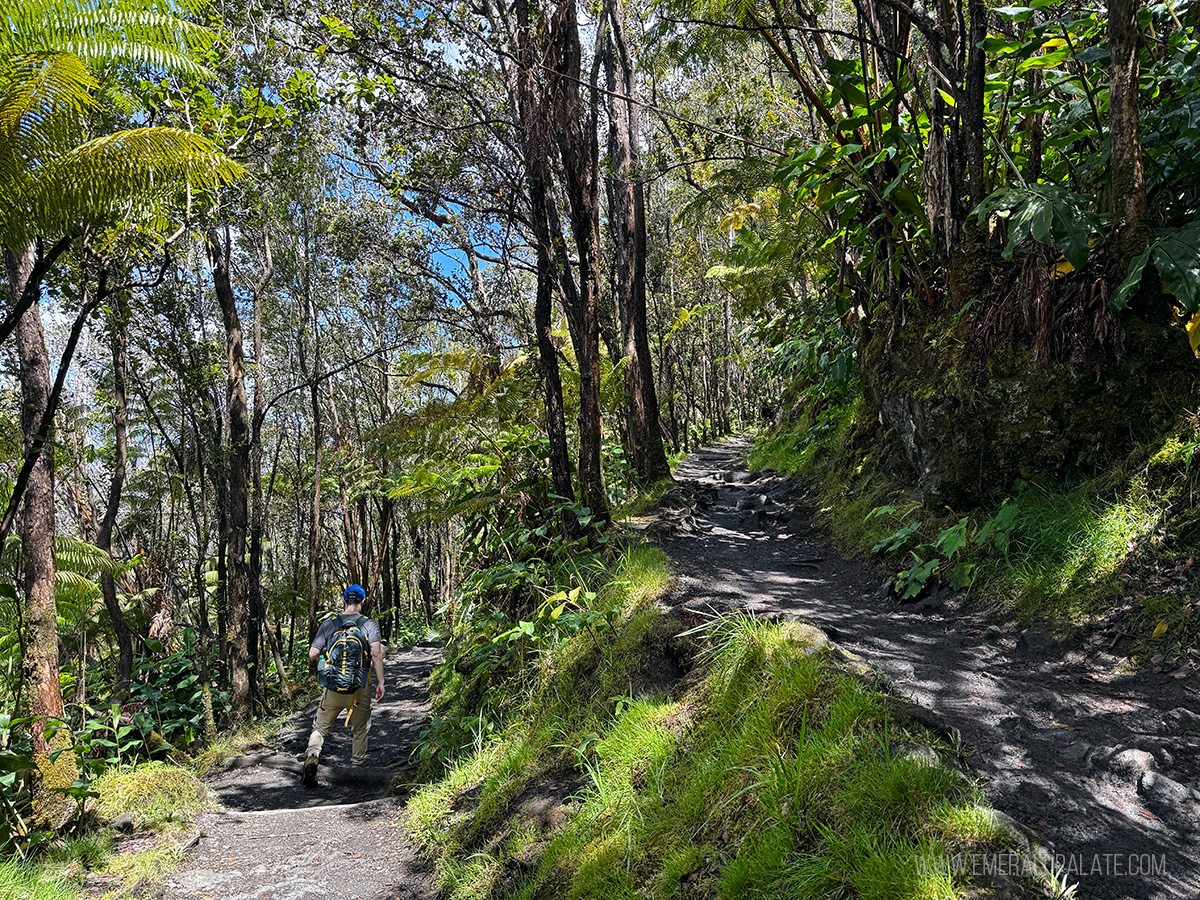
The parking lot at the trailhead is small, so head to the overlook if you can’t find a spot and walk from there to the trailhead. You can do the full loop hike, but we decide to turn back the way we came since the crater is the most interesting part of the hike. If you do this, the hike up the way you came through the rainforest has relatively-gentle switchbacks, but will feel moderately challenging to most after a long time in the sun.
Guided tours exist if you’d prefer to be led along the hike with an expert. As a bonus, they’ll regale you with facts and tales along the way!
Pro tip: The park’s visitors center is closed for renovations, but there are bathrooms with flushing toilets at this trailhead.
Check out a lava tube
website | directions | best for: an easy, eerie walk in a dark cave formed by lava
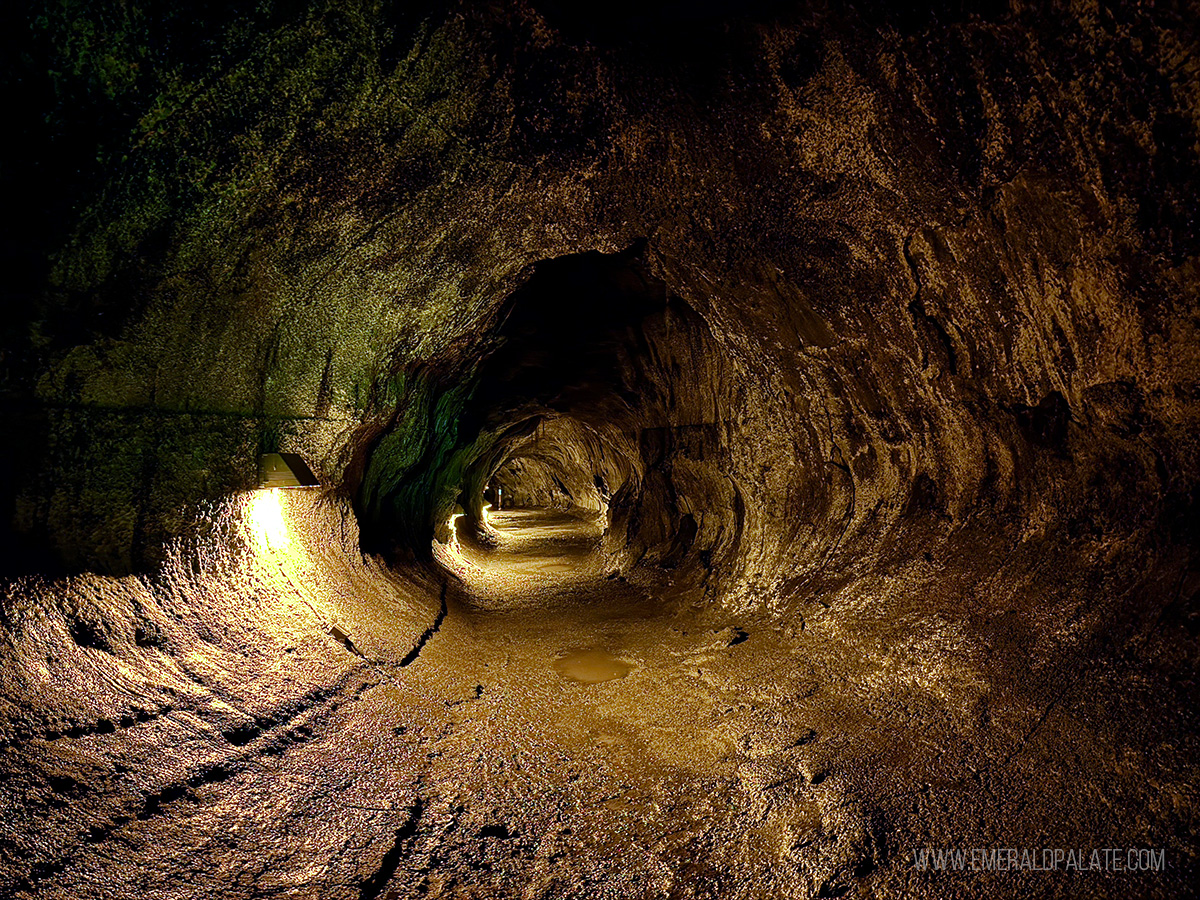
Directly across from the Kïlauea Iki trailhead is the Nāhuku Lava Tube, formerly known as the Thurston Lava Tube. You can walk right through the cavernous tube formed by lava flows decades ago.
It’s only about a 0.5-mile short loop hike, so it’s perfect for all skill levels. You’ll take a short set of stairs down to the entrance, which is surrounded by lush foliage and swaying vines. Once inside, though, it’s devoid of life.
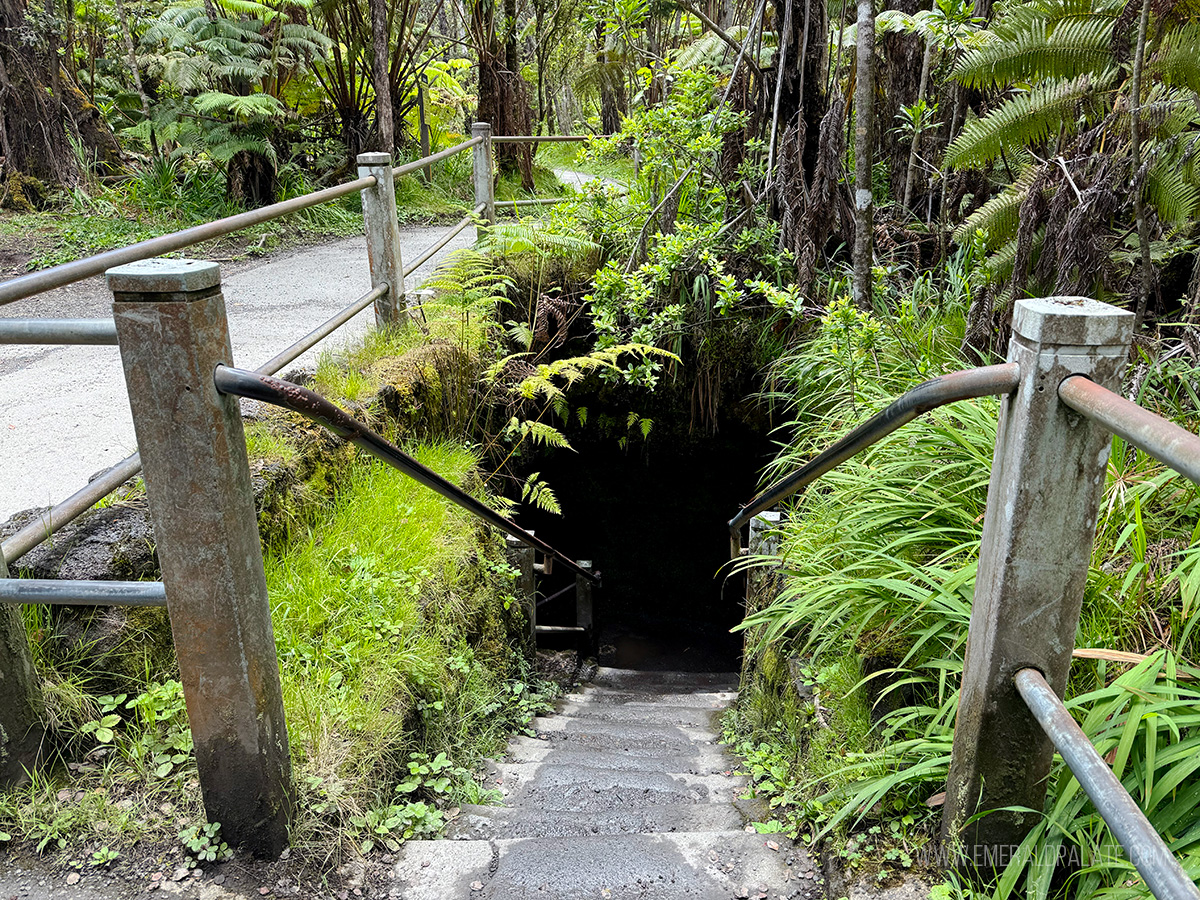
In fact, this is one of the smoothest lava-formed caves I’ve ever been in. There is fine, almost sand-like gravel so there aren’t many tripping hazards and the walls aren’t super craggy. The NPS website says this is because people took rock samples back when the tube was discovered in 1912, which is not recommended to protect the delicate ecosystem.
Many caves require explorers to bring their own light source, but the national park installed lights so it’s easy to see. Make sure to follow the direction of the signs, as the park encourages guests to travel in one direction to keep crowds moving.
Walk among steam vents
website | directions | best for: crater views surrounded by steam
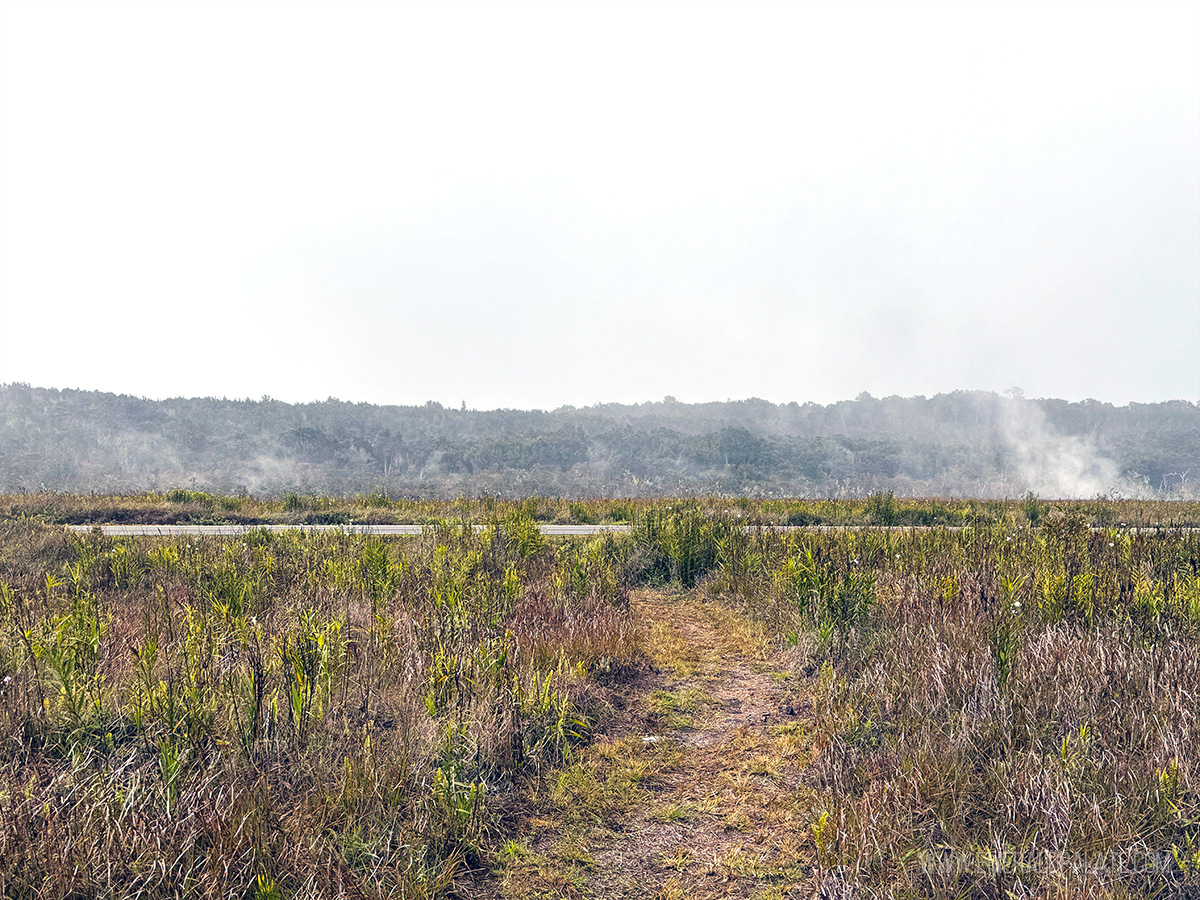
One of the coolest geological experiences to have in the park is to walk among the crater rim while surrounded by steam. That’s possible at Ha’akulamanu (Sulphur Banks), where volcanic gases seep out of the ground. The gases may smell like rotten eggs at times, but it also makes for cool red and brown coloration on the ground as the acid breaks down the lava into clay.
You can stand above a steam vent to feel the heat right from the parking lot. Meander along a portion of the ~20-mile Crater Rim Trail near where you parked to see the breathtaking crater formed by past eruptions. Keep an eye out for rainbows as the sun bounces off the steam.
If you want a bit longer of the hike, do the ~1.5-mile Sulphur Banks Trail. The path is mostly flat and takes you along both the crater rim and inland between the long grasses. Billowing steam makes it feel extra eerie if its overcast!
Gawk at the Kīlauea Overlook
website | directions | best for: expansive views over the crater
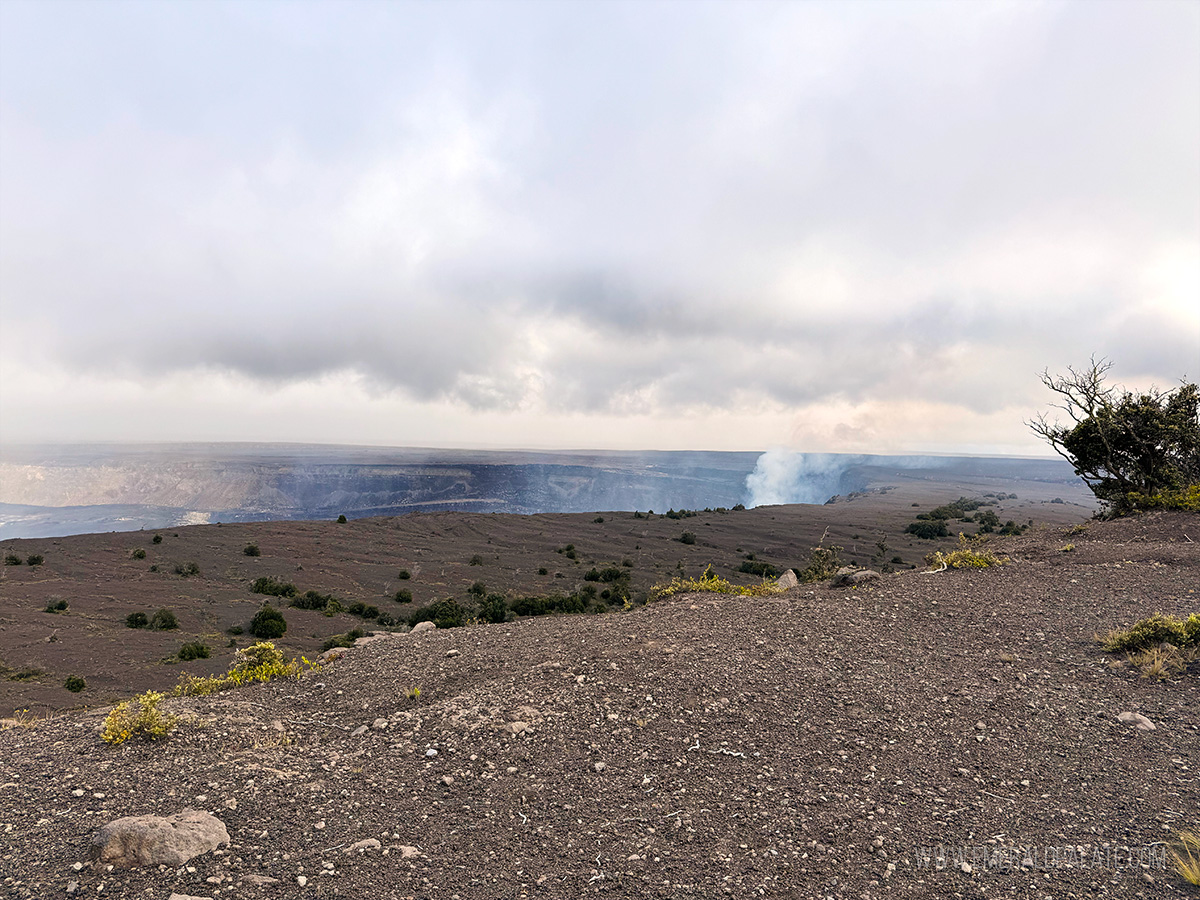
This viewpoint near the steam vents gives you one of the best looks at Kaluapele (Kīlauea caldera) and Halemaʻumaʻu crater. Both of these experienced a massive collapse during the history-making eruption of 2018. The result is a huge canyon-like crater with breathtaking views.
This is one of the popular eruption viewing spots in the park to get a glimpse of active lava because you can get to the viewpoint after an easy 0.1-mile walk from the parking lot.
Note, the once-popular Jaggar Museum on the way to the lookout is closed due to damage from volcanic activity.
Take a scenic drive
website | directions | best for: breathtaking views
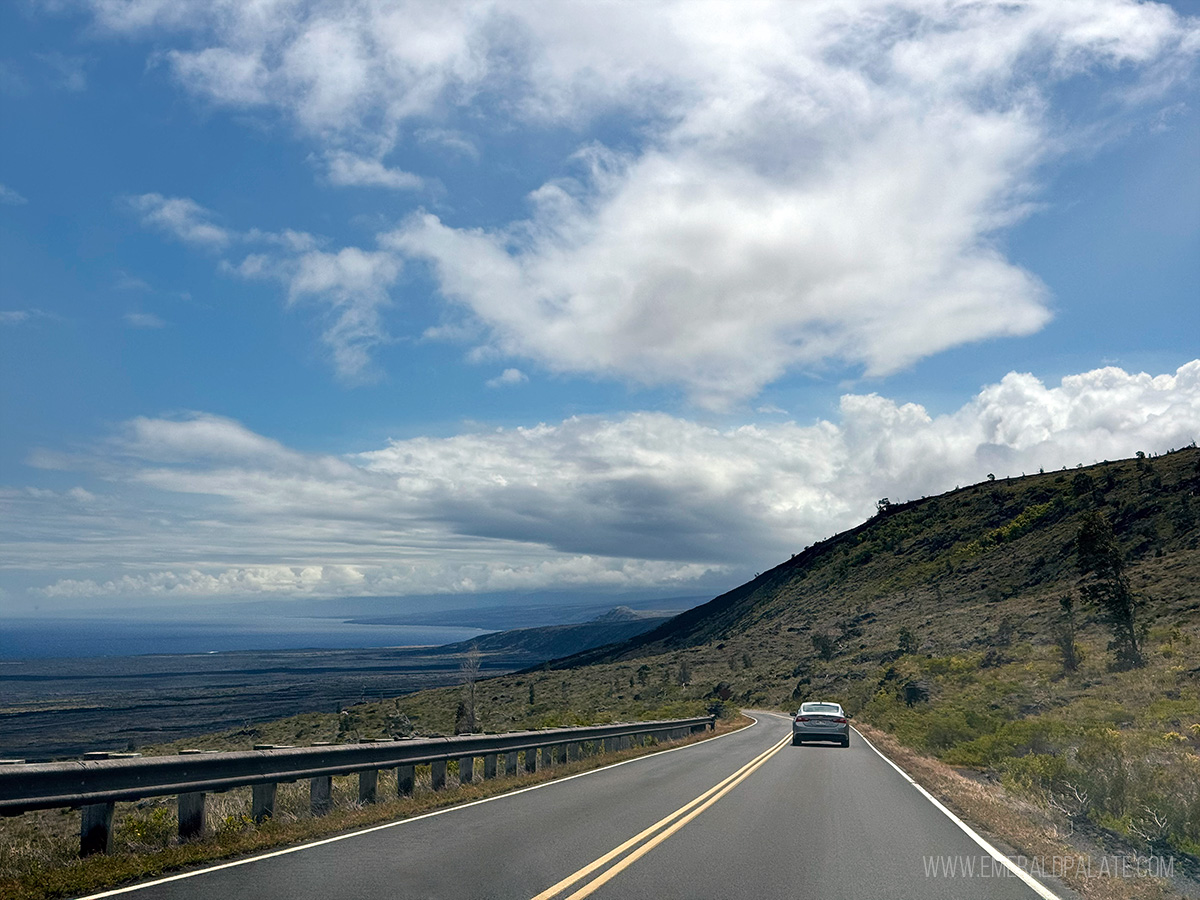
There are two main roads in Volcanoes NP: Crater Rim Drive and the Chain of Craters Road. The Crater Rim Drive takes you to viewpoints around the Kīlauea caldera. For example, on this road opposite Kīlauea Overlook is the popular Keanakako’i Overlook. You’ll also find the trailheads of some of the best hikes in Volcanoes NP.
The Chain of Craters Road is the route you’ll take down the volcano toward the water to explore the parts of the park closer to sea level. It has seemingly countless pull offs and viewpoints, making it one of my favorite activities in the the park. Take your time to pull over at whatever calls you!
Hike to see petroglyphs
website | directions | best for: history buffs
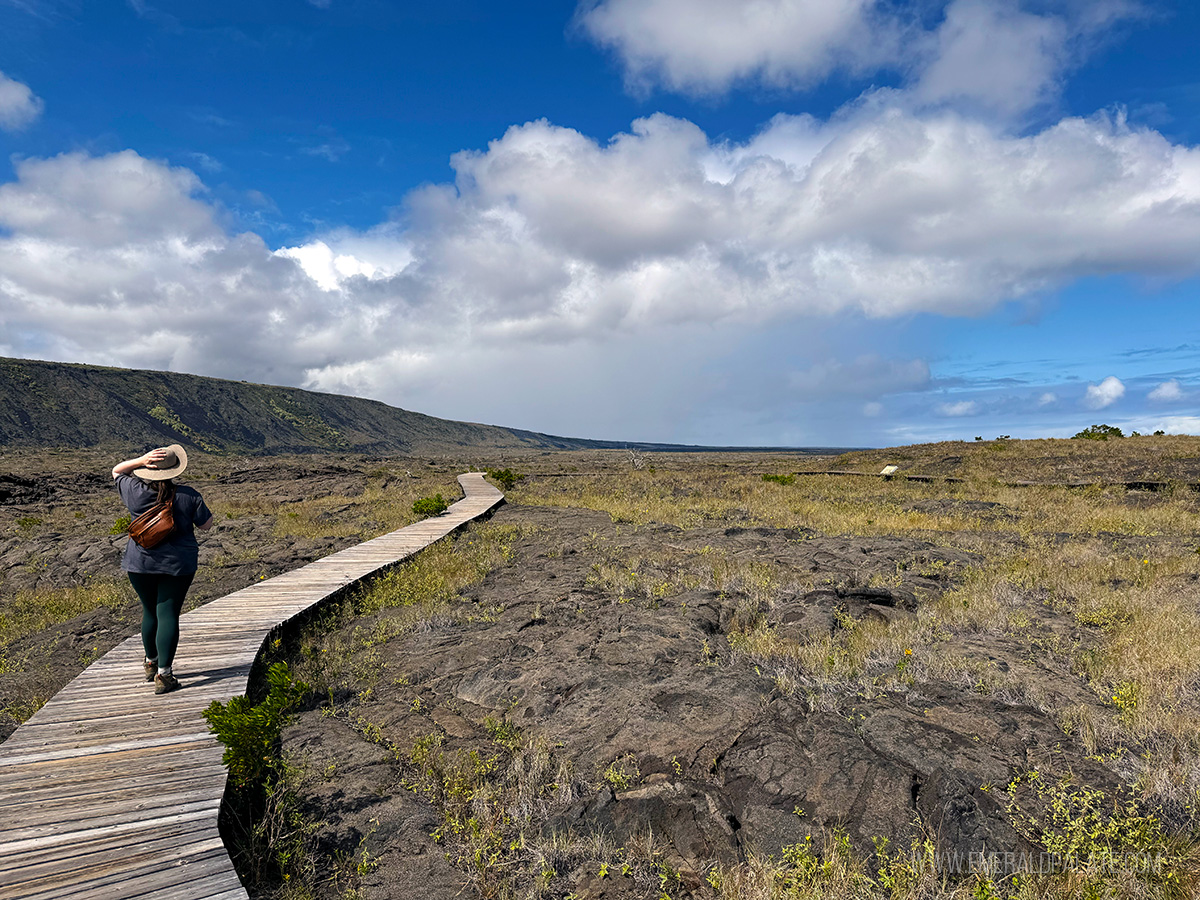
One of the most breathtaking things to do in Volcanoes National Park is see the Pu‘uloa Petroglyphs. Meaning “long hill”, Pu’uloa is considered sacred to the people of Hawai’i. The area is covered with more than 23,000 images carved into hardened lava by people hundreds of years ago. They feature cryptic designs alongside geometric shapes that experts believe explore themes of life’s meaning and records of traveling around Hawaii.
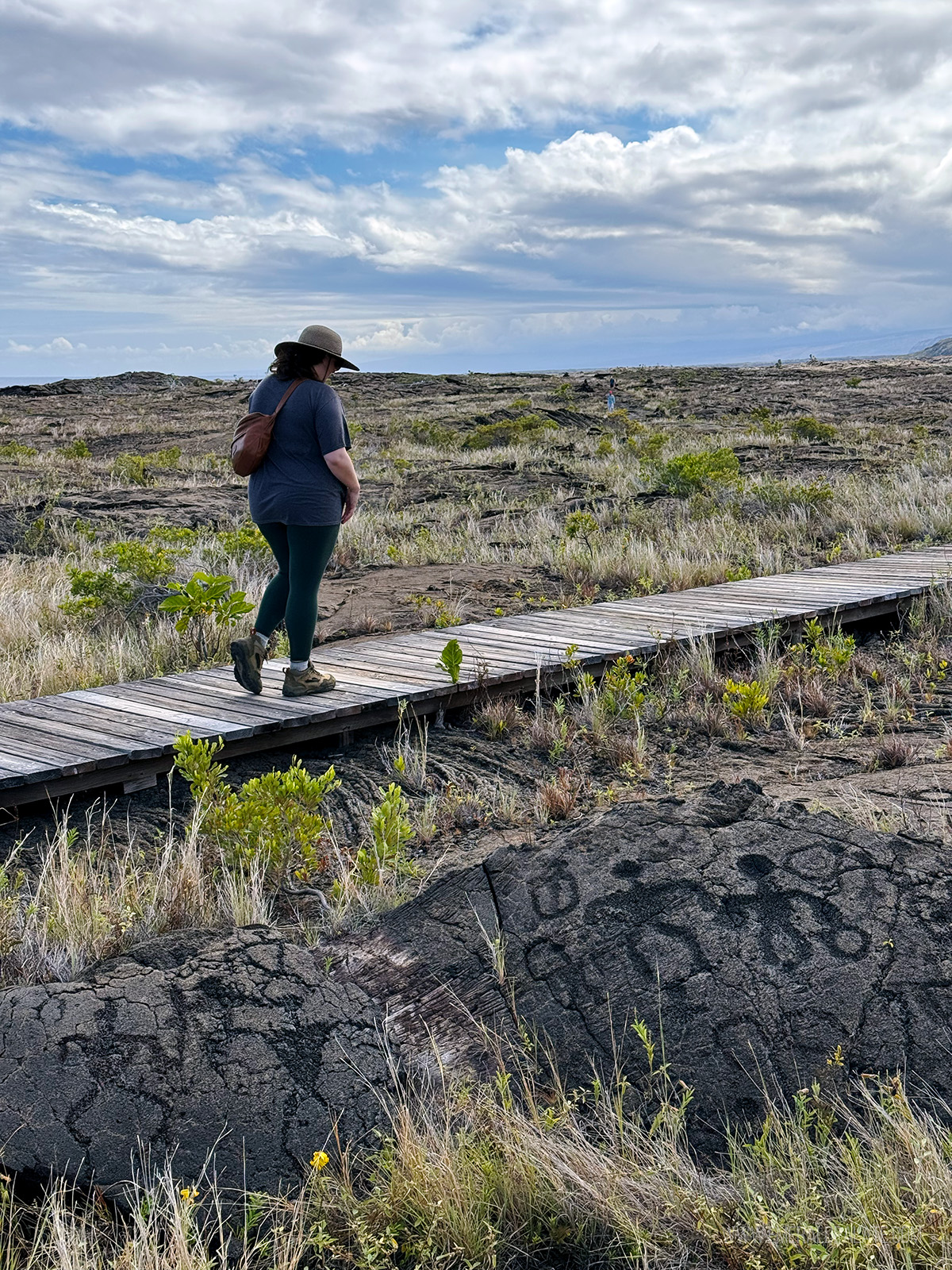
Visitors can see this delicate archeological site by parking on the side of the road and walking a flat, ~1-mile hike to the petroglyphs. You’ll know you’re there once you see the boardwalk raised above the petroglyphs so as to protect them from foot traffic. Stay on the path and take your time reading the interpretive signs and deciding which of these historical treasures are your favorite.
Snap pics at the Hōlei Sea Arch
website | directions | best for: coastal rock formations
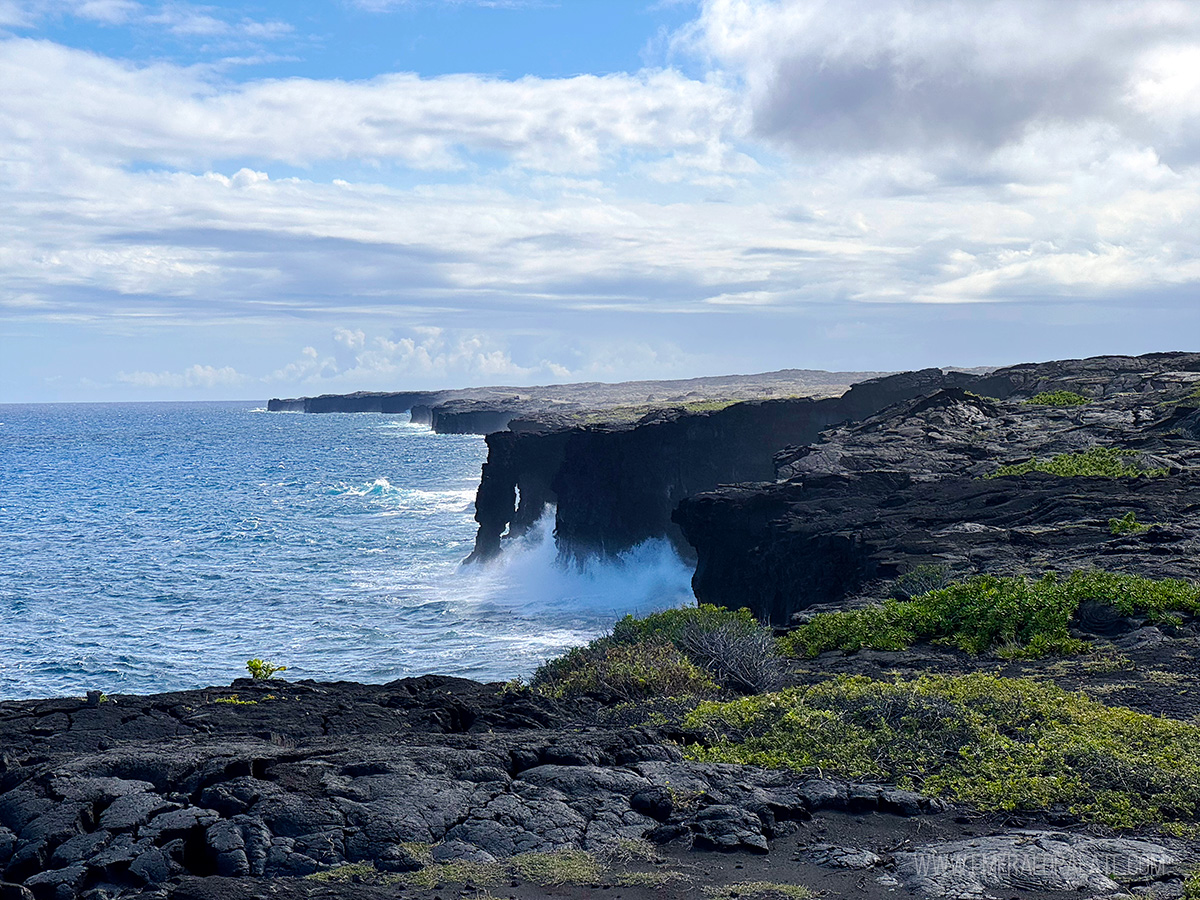
At the end of the Chain of Craters Road is Hōlei Sea Arch, a beautiful rock formation created by lava and carved by water along the coast of southeast Hawaii. You’ll take a short ~0.4-mile walk from the parking lot to the viewpoint, which is roped off to keep visitors away from the delicate cliff. It remind me of a smaller, more hole-filled Cliffs of Moher in Ireland!
See what’s going on at the Volcano Art Center
website | directions | best for: educational programming
No trip to the national park is complete without stopping at the art center. It features a well-curated gift shop and plenty of educational programs that immerse you more deeply into the history of the park. For example, they host hula performances, guided rainforest tours, art classes, and more throughout the year.
Take a guided tour of the park
Prefer to be taken around all the best things to do in Hawai’i Volcanoes National Park? Here are some options!
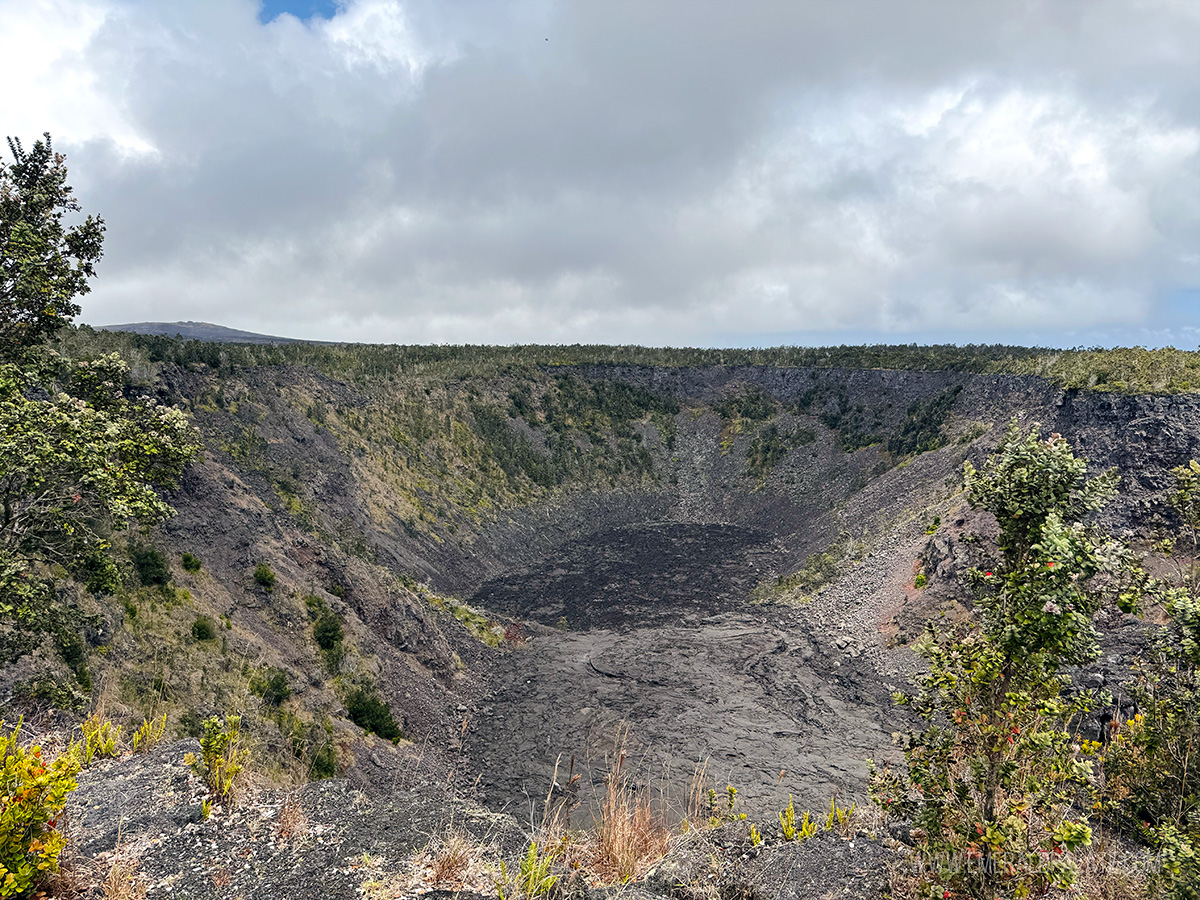
More to do in Hawaii
After you explore all the best things to do in Volcanoes National Park, check out my other guides to the islands.
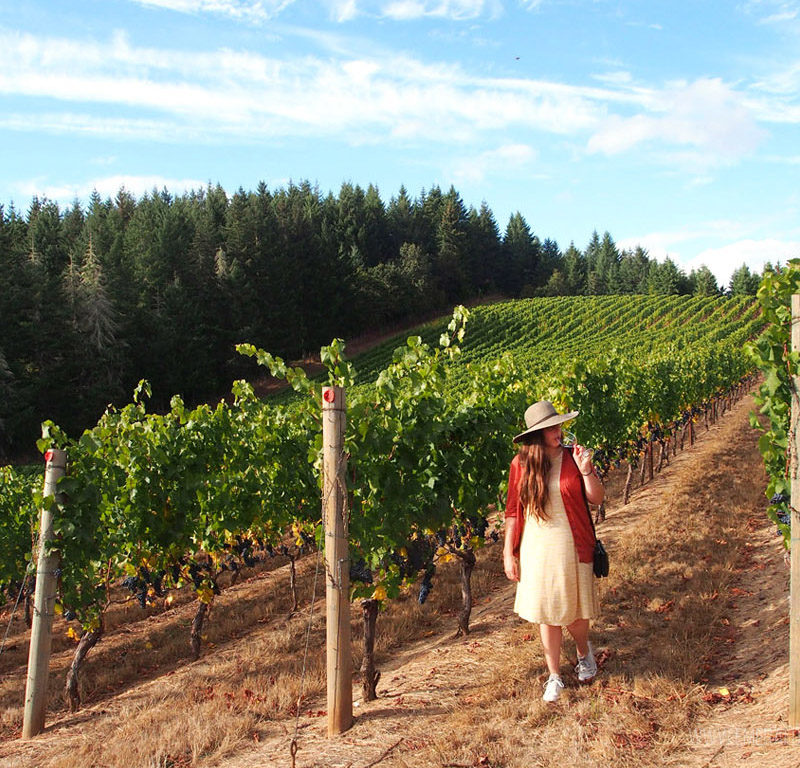


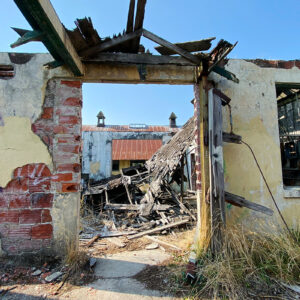
Leave a Reply